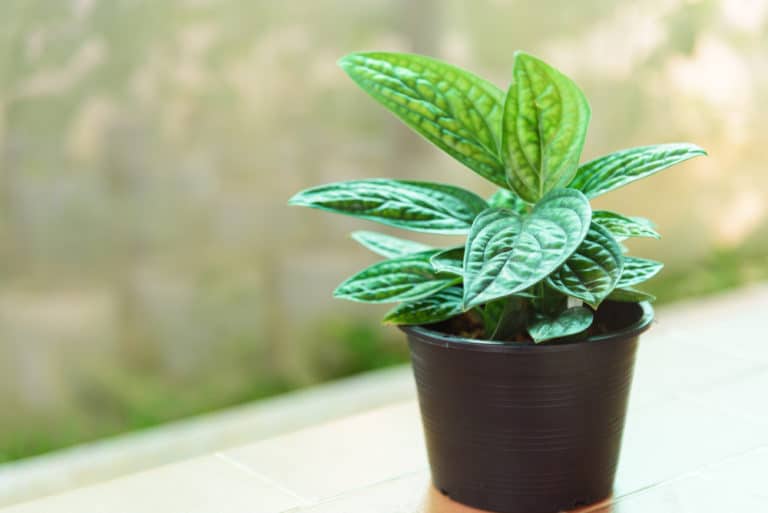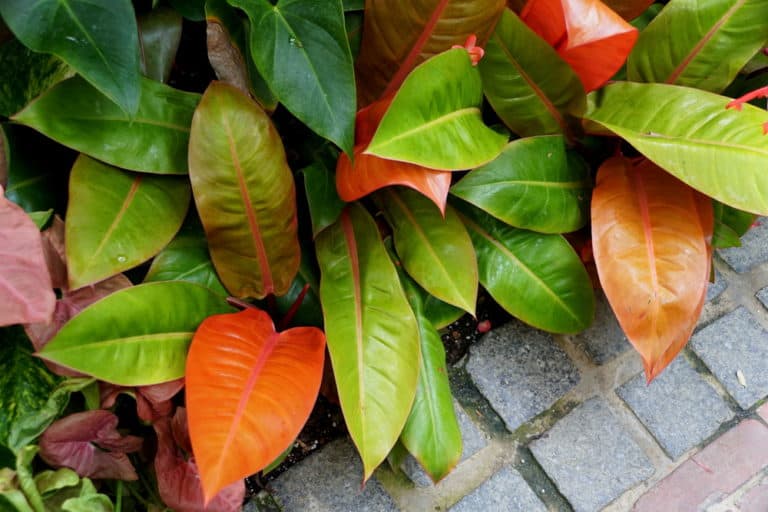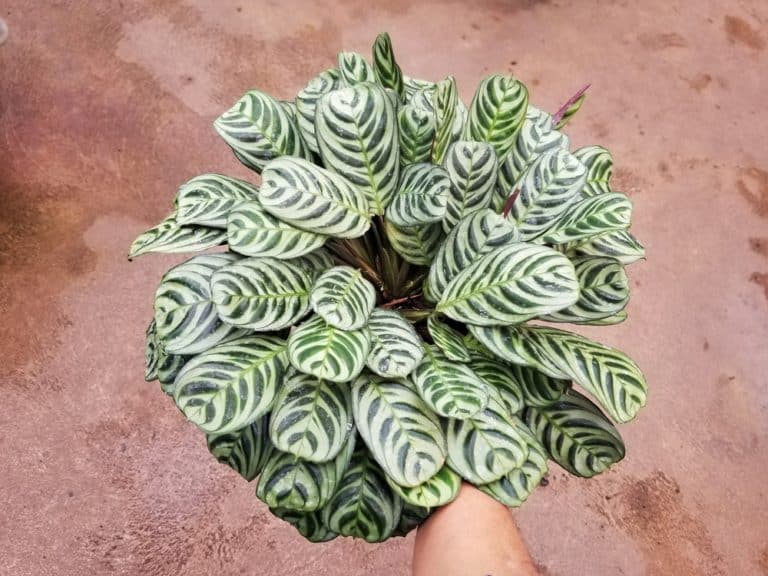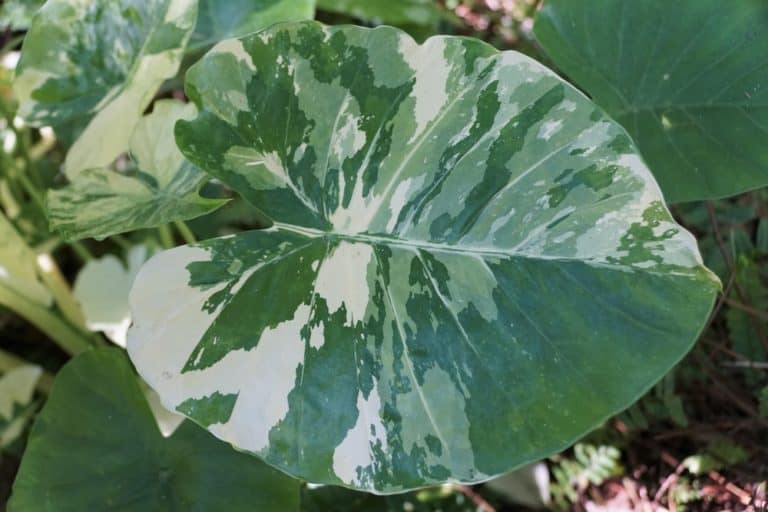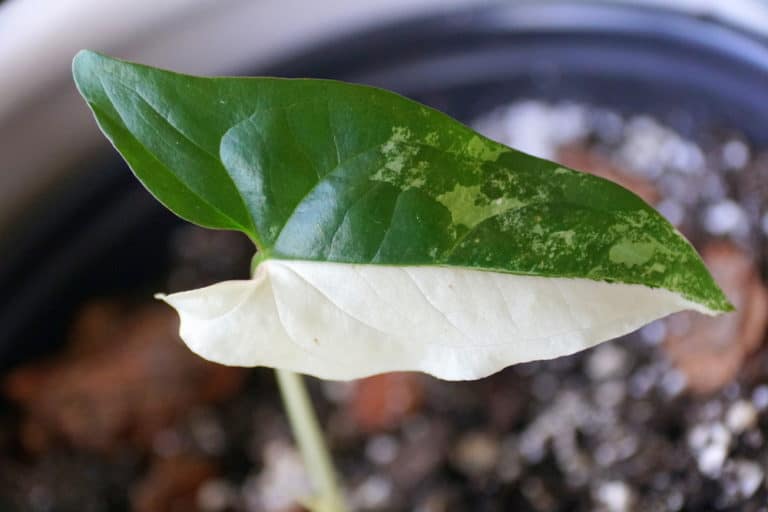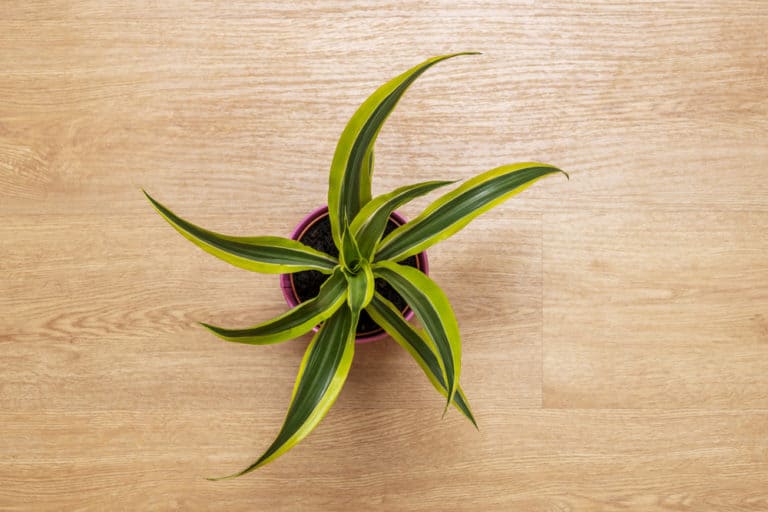Philodendron Verrucosum ‘Ecuador Philodendron’ Care (2024)
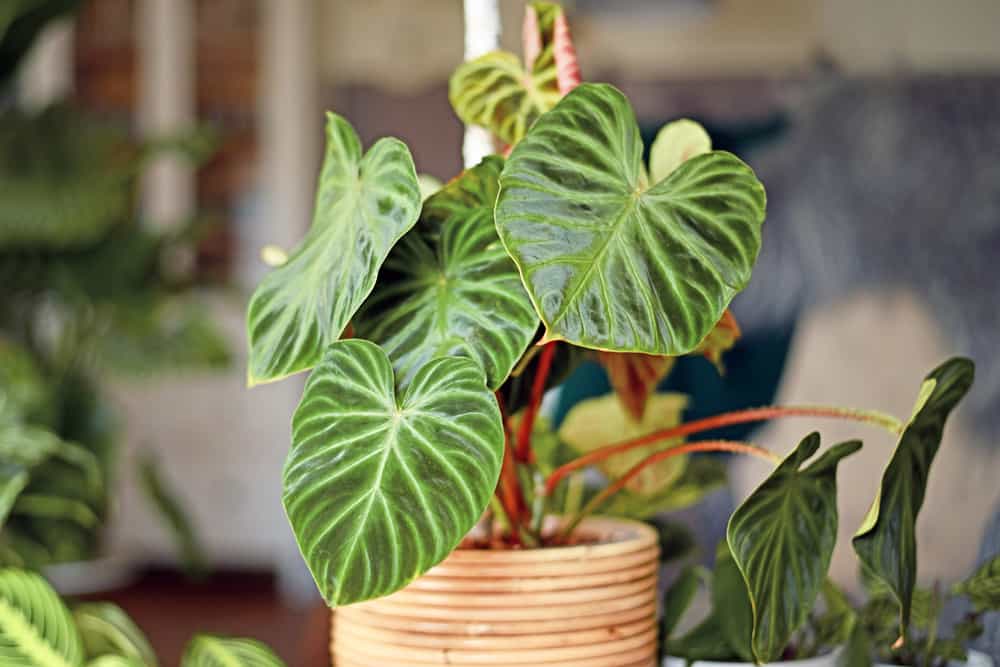
The Philodendron verrucosum is a uniquely stunning philodendron having a dazzling set of heart-shaped foliage and golden ribbing. With its climbing habit, it can grow up to 3 feet tall or more. While the plant’s requirement can a bit complicated, the Ecuador philodendron will surely reward you with its fresh tropical vibe!
| Scientific Name | Philodendron verrucosum |
| Common Name | Ecuador Philodendron, Verrucosum Plant |
| Light | Low to moderate indirect sunlight |
| Watering | Weekly, water if the top two inches of the soil is dry |
| Temperature | 68°F to 77°F (20°C to 25°C) |
| Hardiness Zone | USDA Hardiness Zones 9-11 |
| Humidity | 70 to 90% |
| Soil Type | High in OM and well-draining |
| Soil pH | 5.1-6.0 (Neutral to Acidic) |
| Fertilizing | Thrice a year with a balanced feed |
| Repotting | Every 2 years |
| Pruning | Beginning of the growing season |
| Propagation | Stem Cuttings, Air Layering, Seeds |
| Toxicity | Toxic to humans and pets |
| Mature Size | Can grow up to 3 feet in height |
| Bloom Time | Usually blooms in April |
What’s Unique About Philodendron verrucosum?
The Philodendron verrucosum plant features velvety deep green leaves with stems that can grow up to 8-36 inches upon maturity. Belonging to the plant family Araceae, the P. verrucosum is native to Costa Rica, Panama, Columbia, Peru, and Ecuador. It is considered a hemiepiphyte because it starts off its life cycle from a seed growing on trees and then, later on, develops roots that eventually reach the soil.
Philodendron verrucosum plants differ from their other counterparts through their ribbed texture and leaf blade with a red backside. Their vibrant and broadly patterned leaves make for a perfect addition to your plant collection.
Philodendron verrucosum Care
The Philodendron verrucosum plant care can be quite overwhelming especially when it comes to maintaining the right temperature and humidity, but its vibrant and astonishing foliage is certainly worth it. Hence, it pays to know how you can best provide for your plant needs. Keep reading this Verrucosum care guide so you can be well-equipped for the journey!
Light
The Philodendron verrucosum light requirements consist of low to moderate indirect sunlight. If you are to grow the plant inside, you can place them near an east-facing window, receiving the first ray of sun in the morning which is not too intense.
If grown outside, full sun exposure (especially for longer periods of time) must be avoided as this can harm the plant’s delicate foliage. Since they would usually grow below canopies in their wild habitat, Verrucosum light needs are not too intense, hence they should be able to receive some afternoon shade. Reports indicate that light of an 850-foot candle is the most ideal.
Watering
An important note about Philodendron verrucosum watering is not to overdo it. These plants love sufficient moisture but they do not like to sit in overly saturated soil. Watering needs may also be influenced by the prevailing season, wherein they may be increased during summer and reduced in the winter.
Pro tip: Water Verrucosum only when the top two inches of the soil feels dry to the touch. Avoid overwatering at all costs as this is a notorious plant killer. When a plant is subjected to a prolonged period of water-saturated soil, root rotting may begin and the plant may develop symptoms such as leaf tissue decay, yellowing of the leaves, and stunted growth.
Temperature
In growing this gorgeous specimen, aim for a temperature above 68°F (20°C) because the Philodendron verrucosum temperature range is between 68°F to 77°F (20 – 25°C). Note that the plant may also possess a low-temperature tolerance which can be influenced by the type of verrucosum you have. Several reports indicate that the Ecuador Philodendron is hardy to USDA hardiness zones 9 to 11.
Pro tip: In Central and South America, the ideal temperature for Verrucosum can be maintained easily indoors, but exposure to cold draft should still be avoided. If grown outside, the plant must be brought indoors at the onset of winter in order to avoid freezing injuries.
Humidity
Considering the kind of environment from which the plant originates, the Philodendron verrucosum is happy with a high humidity level, which is usually around 70 to 90%. While this can be challenging to maintain indoors, there are a lot of ways to increase the humidity inside your home including the use of a humidifier or setting up a pebble tray.
Philodendron verrucosum humidity requirements are high because it normally thrives in a tropical atmosphere which can be very humid. The ideal humidity for Verrucosum can also be achieved through occasional misting or by establishing the plant in a terrarium or bathroom.
Soil
As a hemiepiphytic plant, the soil for Verrucosum usually consists of high organic matter and a well-draining substrate. Good aeration is a must for most species of Araceae and so perlite and rice hulls may be added to provide texture and improve the porosity of the soil mix, enabling the plant’s roots to proliferate.
To create the ideal Philodendron verrucosum soil, mix 30% of garden soil with 30% of orchid bark or perlite, and add at least 10% of charcoal. This will improve texture and drainage, and encourage the activity of beneficial organisms. Moreover, the preferred pH level for Verrucosum is usually between 5.1-6.0, which is neutral to acidic.
Fertilizer
Applying fertilizer for Verrucosum is usually done at least thrice a year since it is not considered a heavy feeder. You can use any slow-release feed for your plant and it would be more effective if given at a stage where the plant is actively growing, usually during summer and spring.
Philodendron verrucosum fertilizer should be balanced in order to become more effective, especially if the goal is to hasten its growth. You can use a commercially bought feed with a balanced fertilizer ratio such as 10-10-10 or 20-20-20. As much as possible, avoid cheap fertilizers as they tend to accumulate in the soil over time.
Potting & Repotting
One thing to take note of about P. verrucosum is that they like to develop an extensive root system but they do not like to be root bound. Hence, Philodendron verrucosum repotting is done once every one or two years.
When repotting Verrucosum, choose a new container at least twice the current pot size in order to accommodate more growth. Prepare a fresh potting mix and fill half of the container; gently place the root ball in the center of the pot, and fill with the remaining soil. Firm up from around the base of the plant and water thoroughly.
Pruning
You do not have to perform Philodendron verrucosum pruning as often for this is typically done only when you want to shape your plant – depending on how you wanted it to look.
As a climbing ornamental plant, it would eventually ascend with the help of a pole or any climbing support. Of course, if you want to limit this, you would need to trim off segments from your P. verrucosum.
Pro tip: When you are cutting Verrucosum, always use a sterile shear or pruning knife. You also want to remove and trim some of the spent foliage in order to prevent infestation and certain infections to occur.
Propagation
There are several convenient ways of Philodendron verrucosum propagation, including stem cuttings, air layering, and seeds.
To propagate Verrucosum through cuttings, select a healthy stem about 4-6 inches long and have at least 2-3 leaves. Cut below the node with a sterile scissor and place into a jar of water, making sure that there are no leaves touching the water. You can also plant the cuttings into potting soil, keeping it moist for 3-4 weeks until roots begin forming.
For air layering, you can induce rooting from your future cuttings by putting sphagnum moss in the node portion and covering it with plastic. After a few weeks, roots should also begin forming.
For newly potted plants, water regularly and place them on a bright spot with lots of indirect light.
Also, make sure to check out our in-depth Thai sunrise philodendron plant care guide.
Common Problems of Philodendron verrucosum
The key to preventing any Philodendron verrucosum problems is to observe proper cultural management. Avoid overwatering at all costs and make it a habit to immediately prune off spent foliage and diseased portions. If you notice that the leaves appear dull, check for signs of feeding insects.
Below are other problems with Verrucosum that you may encounter and the ways you can address them.
Pests
The most common Philodendron verrucosum pests are spider mites, whiteflies, thrips, mealy bugs, and fungus gnats. They tend to feed on the plant sap and therefore suck the life out of your Verrucosum plant, turning some of the leaves yellow, spotted, and even blistered.
Some of the measures to mitigate pest infestation are the use of alcohol spray and horticultural oils such as neem oil. You can either spray your infested plant to get rid of any insects or simply wipe off the surfaces of the leaves with any debris and sooty molds that may have been formed by pests like aphids and mites.
Diseases
Most Philodendron verrucosum diseases are mainly caused by overwatering, underwatering, and the use of inappropriate soil mix. For example, when the roots are exposed to prolonged periods of waterlogging, roots may begin to rot, causing a decayed root system and yellowed leaves – later on becoming an avenue for fungal and bacterial growth.
Pro tip: Water your Verrucosum plant only when the top two inches of the soil feels dry to the touch. Use a rich but well-draining potting mix and a container with sufficient drainage. If the plant appears to be infected, immediately prune off the infected stems and leaves to prevent further infection.
Growing Problems
In growing Philodendron verrucosum, it’s quite crucial to maintain the right level of humidity, temperature, and appropriate watering cycle in order to avoid growing problems such as root rotting, yellowing of the leaves, and other diseases.
Oftentimes, a sick plant results from improper cultural management, e.g. a humidity level and temperature higher than the optimum increases the incidence of pests. Hence, these should be avoided as it predisposes the plant to more serious problems such as fungal and bacterial infections.
Pruning is the best way to prevent further infection but the use of proper potting mix with good drainage prevents waterlogging and thus ensures optimum growth.
Toxicity of Philodendron verrucosum
Similar to most philodendrons, the Verrucosum plant has some level of toxicity which if ingested in large amounts can cause serious medical problems such as vomiting, nausea, diarrhea, and difficulty in breathing. The plant is also considered toxic to pets, so if you have lots of furry friends roaming around, you may need to consider a different houseplant to raise indoors.
For Humans
The Philodendron verrucosum is considered toxic to humans and should not be consumed. To avoid any risk, it might be better to consider a different ornamental plant that is much safer around small children.
Most philodendrons contain calcium oxalate crystals that if ingested in large amounts, can cause severe forms of irritation such as skin and mouth blisters. In some cases, it may result in difficulty in swallowing and breathing. If any of these symptoms appear, you should immediately call a physician for faster treatment and recovery.
Pro tip: Place your P. verrucosum in elevated spots – away from children – such as cabinets and corner tables.
For Pets
Unfortunately, the Philodendron verrucosum is also toxic to both cats and dogs. Hence, growing the plant inside may seem risky since you cannot fully control your pets, especially if they are freely roaming around your house.
Some of the symptoms that may appear are restlessness, blood in urine and stool, pawning off the face, and difficulty swallowing. If you suspect that your pets may have ingested some parts of the plant, quickly contact your veterinarian or animal poison hotline, so they get immediate medical attention.
Pro tip: Strategize how and where you are going to place your Verrucosum plant indoors. If you have a lot of furry friends at home, it may be best to grow them outside.
Philodendron verrucosum Appearance
The rather stunning Philodendron verrucosum appearance is mainly attributed to the plant’s vibrant set of foliage with a velvety ribbed texture and striking colors. This unique persona of the P. verrucosum makes it a highly covetable ornamental species that invites a tropical vibe to your home, office, or in your garden.
Foliage
The foliage of Philodendron verrucosum is notable for its velvety texture, interesting petioles, and fascinating leaf blades. The colors usually found in the heart-shaped aroid plant range from red to purple, but the light green venation is made more obvious by the deep-green coloration of each leaf.
At the initial growth stage, the leaves appear in lighter shades of green, which later on turn to deep green and then to burgundy upon maturity. The P. verrucosum is a climber and would gladly grow with support such as that of a pole or stake. Hence, they are often used as a climbing specimens or a focal point for ornamental gardens.
Flowering
Following the transition from the juvenile to the reproductive stage, the Philodendron verrucosum flowering would later occur. Once it hit maturity, several inflorescences or clusters of flowers can begin forming from the stem of the plant.
During the blooming period, which is usually in April, the dainty flowers open up to a cone-shaped spathe (which also comes with a few color splashes) enclosing the spadix. As a means of propagation, the Verrucosum flower can be hand-pollinated in order to encourage seed formation.
If you wish to hasten the flower formation of your philodendron, you can subject the plant to a short period of drought. This will trigger the plant to produce and allocate its energy for floral development.
Size and Growth
The size of Philodendron verrucosum leaves can reach up to 3 feet tall and so is its height. Since the plant is good climbers, they can continue to grow at a longer length as long as there is continuous support.
The plant has a medium growth rate and it is mainly influenced by the kind of environment in which the plant grows. With optimum conditions and adequate fertilizer given, the plant can actually grow faster in cultivation.
Pro tip: Adding a stake or moss pole to your P. verrucosum can help in encouraging thicker stems, more growth, and achieving your desired length.
Philodendron verrucosum Fragrance
While there is no recognized scent that may be attributed to Philodendron verrucosum fragrance, there is a certain smell that you must be wary of when tending to this tropical beaut.
For example, both fungal and bacterial infection may form tiny, water soaked areas in the leaves that later forms into lesions. These decayed plant segments often emits unpleasant odor.
Pro tip: Always remove the diseased portion of the plant using sterile shears or a pruning knife in order to prevent the spread of infection. You can also use fungicides, neem oil, and citronella to treat and clean the leaves, respectively.
Suggested Uses for Philodendron verrucosum
Large-leafed philodendron plants are commonly grown indoors not only for their aesthetic value but also for their ability to purify the air and get rid of harmful pollutants. Hence, P. verrucosum plants are commonly placed in kitchens and bathrooms.
Furthermore, the plant’s alluring set of foliage makes it an ideal ornamental plant whether grown inside or simply as an addition to your tropical-inspired garden.
The plant can simply be maintained as a pot plant or be encouraged to climb with the use of a pole. Either way, the Philodendron verrucosum surely rewards plant parents with its stunning leaf formation, colors, and texture.
FAQ
What is Philodendron verrucosum?
The Philodendron verrucosum is a uniquely stunning member of the Araceae family with a dazzling set of heart-shaped foliage and golden ribbing and can climb up to 3 feet tall.
How to identify Philodendron verrucosum?
The Philodendron verrucosum plant features velvety deep green leaves that can grow from 8 to 36 inches upon maturity. The foliage is ribbed and has a well-defined venation.
How to care for Philodendron verrucosum?
When caring for the Philodendron verrucosum, always use an organically rich potting mix and place the plant on a spot that receives an adequate amount of filtered light.
How to grow Philodendron verrucosum indoors?
Grow your Philodendron verrucosum indoors by placing it near an east-facing window. Water as needed and maintain an optimum temp of 20°C to 25°C and humidity of at least 70%.
How to grow Philodendron verrucosum outdoors?
When growing Philodendron verrucosum outside, be sure that it receives some afternoon shade, feed with a balanced fertilizer, and water thoroughly. Avoid exposing the plant to extreme heat and cold.
How fast does Philodendron verrucosum grow?
The Philodendron verrucosum has a medium growth rate but it can actually grow fast under the right conditions: sufficient light, adequate water, optimum humidity, and appropriate soil mix.
How tall does Philodendron verrucosum grow?
The Philodendron verrucosum plant can grow up to 3 feet tall, but with the right climbing support, it can actually grow at any length you desire.
How to make Philodendron verrucosum grow faster?
Feed your Philodendron verrucosum plant with a balanced fertilizer ratio of 10-10-10 or 20-20-20 during the growing season. The most active growth usually occurs in spring and summer.
How to stake Philodendron verrucosum?
Put a stake behind your Philodendron verrucosum plant to provide support. Along with a pole, this will also help the plant develop thicker stems and longer leaves.
How to pot Philodendron verrucosum?
Prepare fresh potting soil and fill half of the new container. Gently place the plant in the center and then fill it with the remaining soil, and then water thoroughly.
How to revive Philodendron verrucosum?
Look for signs of infection or infestation and treat the plant accordingly. Also, pruning off spent leaves and flowers can help keep your plant vibrant and healthy-looking.
Why is my Philodendron verrucosum dying?
A dying plant may have been a result of improper cultural management. Avoid overwatering and overfertilization. Use the appropriate soil mix and maintain the right temperature and humidity.
Why is my Philodendron verrucosum drooping?
Drooping leaves may be caused by root rotting. To verify, dig into the base of the plant and see if the roots are brown and mushy.
How cold can Philodendron verrucosum tolerate?
While the plant may have a bit of a low-temperature tolerance, you should not let the temperature go below 50°F, as this can pose injury to the plant over time.
How to get rid of pests on Philodendron verrucosum?
Use horticultural oils such as neem oil and citronella to wipe off the leaves with any debris like honeydew or sooty mold. You can also use an alcohol spray to eradicate any feeding insects.
Is Philodendron verrucosum toxic to cats?
Yes, the Philodendron verrucosum is toxic to cats because it contains calcium oxalate crystals that if ingested, can cause symptoms such as mouth and skin blisters.
Is Philodendron verrucosum toxic to dogs?
Yes, the Philodendron verrucosum is toxic to dogs. If ingested, some of the symptoms that may occur are pawning of the face, blood in urine and stool, and difficulty swallowing.
Is Philodendron verrucosum toxic to children?
Yes, the Philodendron verrucosum is also considered toxic to humans, and small children are particularly at risk. Some of the symptoms that may occur are vomiting and diarrhea.
Is Philodendron verrucosum toxic to humans?
Yes, the Philodendron verrucosum is toxic to humans, especially if ingested in large amounts. Some of the symptoms that may occur and thus need immediate medical attention are difficulty breathing, vomiting, and mouth irritation.
Does Philodendron verrucosum have a scent?
There is no recognized scent that may be attributed to the Philodendron verrucosum. However, bacterial and fungal infections can emit unpleasant odors which call for immediate treatment.

